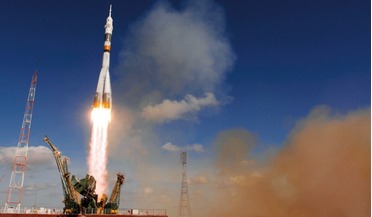 March 2018
Enabling private sector success in space - SGAC perspective
March 2018
Enabling private sector success in space - SGAC perspective
... effect of this on NASA’s Space Launch System (SLS). Former President George W Bush introduced a plan to create a new booster to return the US to the Moon and then to Mars. Barack Obama then scrapped this programme before reinstating...
 October 2018
The ethics of space exploration
October 2018
The ethics of space exploration
... rush that came with the launch of the SpaceX Falcon Heavy, the choreographed landing of the strap-on boosters and the image of Earth captured from a car orbiting the Sun. What a ride! Who could have...
 October 2018
Sustainable ways of living on the Moon and Mars
October 2018
Sustainable ways of living on the Moon and Mars
... rocket propellant from the Earth is unrealistic. Currently a launch to low Earth orbit (LEO) via the Atlas V booster costs US$20,000/kg while SpaceX promises a reduction to US$1,700/kg with its partly reusable Falcon Heavy rocket. Of course...
 October 2019
Reusability is key to expanding future space launch business
October 2019
Reusability is key to expanding future space launch business
.../liquid hydrogen engine, which is being adapted for use as the upper stage engine for the larger booster. We’re also taking the avionics, flight control and landing systems from New Shepard to use on the New...
 April 2020
European spaceports compete for recognition and business
April 2020
European spaceports compete for recognition and business
... million loss for SpaceX, including the lost launch vehicle, possible future revenue from reusing the booster and repairs to the launch pad. In addition, SpaceX lost an estimated $200 million to $500 million in revenue for...
 April 2020
Replacing hydrazine fuel with a greener alternative
April 2020
Replacing hydrazine fuel with a greener alternative
..., but proper infrastructure can’t be counted on. Some Chinese civilians, for example, have suffered when Long March boosters impacted their villages, emitting thick clouds of yellow smoke, while Russian civilians have watched the yellow...